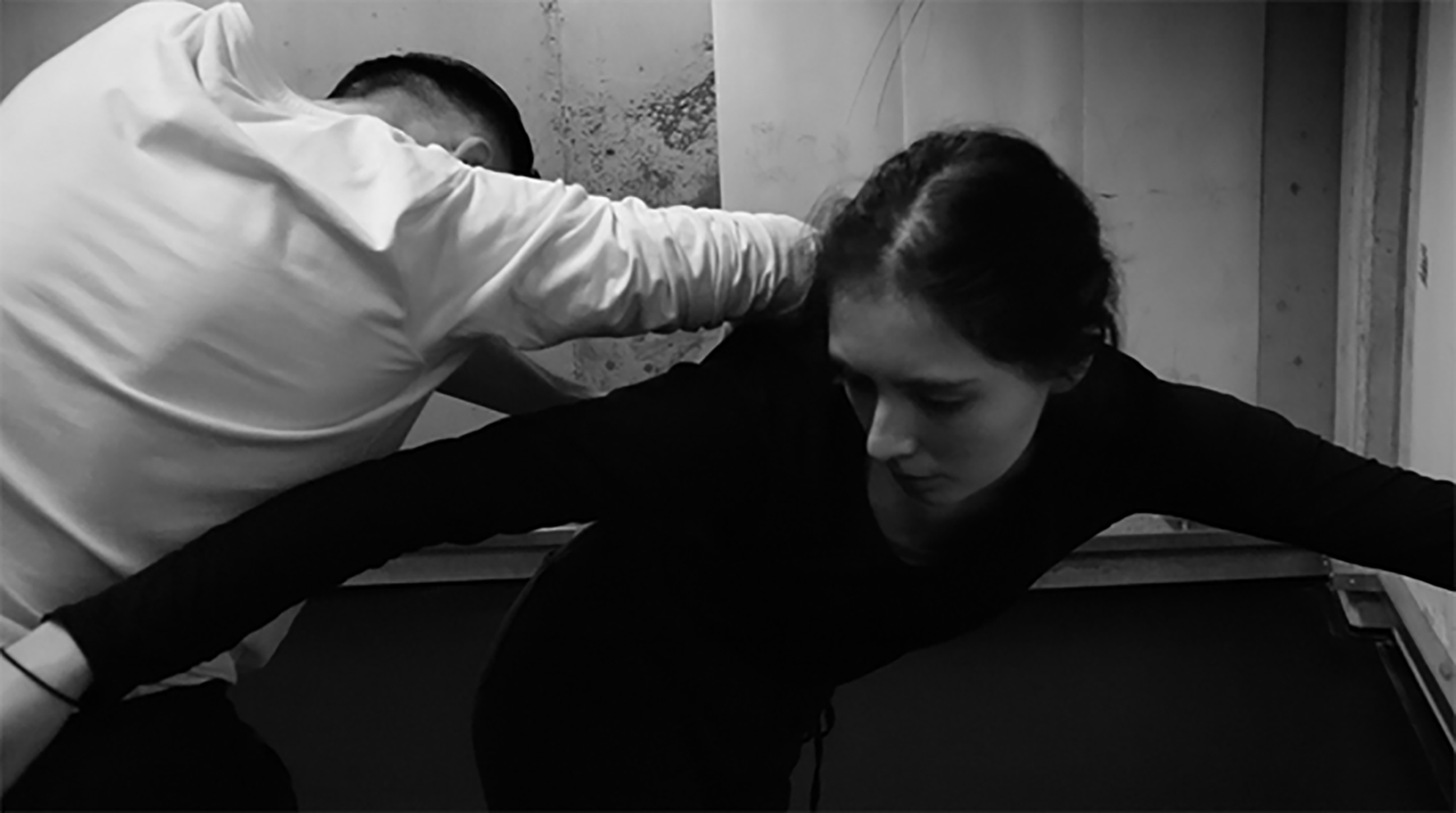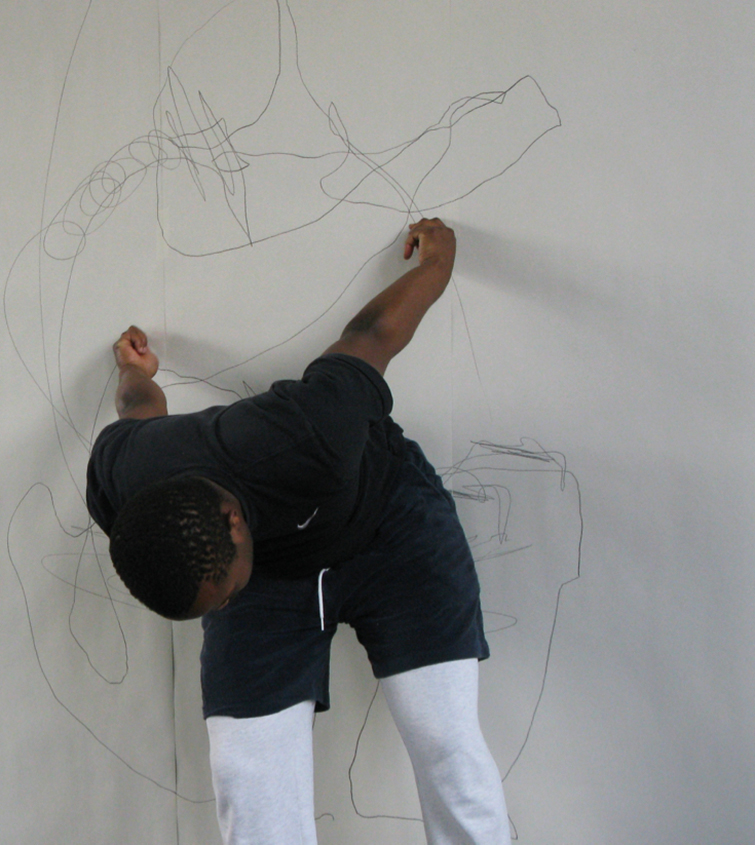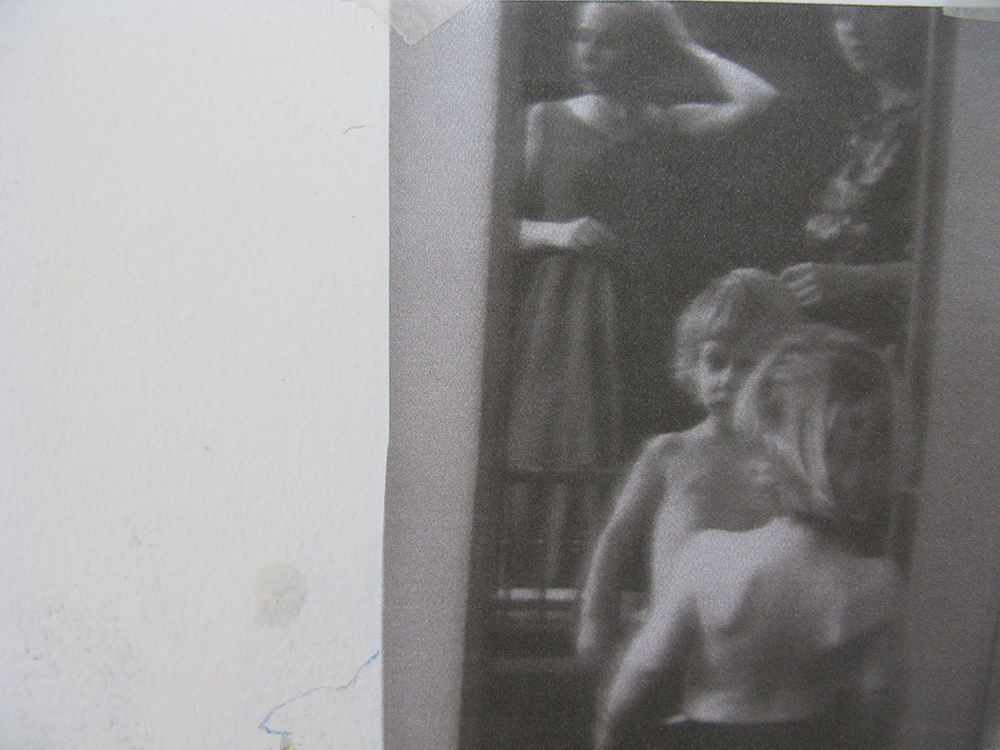
Working with Maria, Yi and Zach in the Void studio Falmouth


The concept of “orientation” allows us then to rethink the phenomenality
of space – in that is, how space is dependent on bodily inhabitance.
And yet, for me learning left from right, east from west, and forward
from back does not necessarily mean I know where I am going.
I can be lost even when I know how to turn, this way or that.
SARA AHMED
Queer Phenomenology, Orientations, Objects, Others
We enter the future walking backwards
PAUL VALÈRY


.back through moving
.behind from appears noticing
.scan eyes softening
.drops time
.touch remembering
.surface touching
.behind drawing
.back turning


Working with Bakani at Dance4 July 2019


J.F Gautier d’Agoty, 1745/1746

Experimenting with sounding/back Rob Gawthrop Dance4 July 2019





Working with Neil Chapman in Room 15 Cast Cornwall August 2019

Salvador Dali
My Wife, Nude, Contemplating her own flesh becoming stairs, three vertebrae of a column, sky and architecture 1945
[E]very turn is a type of turning around, movement toward the back,
toward what is behind: in turning however gently to the right or
to the left, indeed up or down, one is on the way toward the back.
DAVID WILLS
Dorsality, Thinking back through Technology and Politics

Paul Klee Angelus Novus 1920

TURNING
TWISTING
WRAPPING
LEANING ON AWAY TOWARDS
a heavy dark veil weighing me down, I could hardly move (Maria)
moving my dragon’s spinal tail (Yi)
moved by an energetic restless force twisting from up to down (Zach)




tilt-rhythm-back: collaborative research
tilt-rhythm-back: dances & drawings is hybrid choreographic research developing 2019-2021 through workshop, residency and studio conversations with dance-artists, sound-artists and writers.
Working in the studio 2019 in residencies at Dance4 Nottingham 1-14 July, Siobhan Davies Studios London 23-26 July, CAST Helston 24-25 August and Void Falmouth 26-30 August and 11-15 November.
The Dance4 residency was supported by an a-n Bursary [Artist Information Company] with documentation and an Artist Q&A still available to view on the a-n blog
tilt-rhythm-back is an investigation of the dorsal and the ways in which a body orientates to self, other and surrounding world – through the back.
The dorsal surfaces of the body hidden from view, things barely glimpsed at the edges of vision.
Moving through the back (and moving backwards) opens particular connections to the spine, weight, gravity, breath, skin, vision – and time – often manifesting as a slightly disorientating force. I am curious how the dorsal can operate as a disruptive choreographic intervention in the general forward direction of our moving, working, living; and how philosophical ideas of the dorsal coincide and reside in the moving body and in moving together.
resisting forward rush
dropping desire
softening focus
Sensory and anatomical details of dancing extend into philosophical notions of the dorsal in relation to perception, time, rhythm, technology.
evoking dorsal imagination
Research is gathering images, perceptions, art works that evoke a dorsal imagination, pull against verticality and complicate relations between seeing, hearing, touching, forwards, backwards, front, behind, axis, surface, future, past.
At Dance4 I invited writer Emma Cocker, choreographer Bakani Pick-Up, sound-artist Rob Gawthrop into studio conversations through doing, talking. Studio conversations happened with choreographer Grace Nicol at Siobhan Davies Studios London and with dancers Maria Evans, Zach McCullough, Yi Kwek in Falmouth and with writer Neil Chapman at CAST Helston Cornwall (Room 15).
With the dancers I have been developing solo, duet and trio scores for moving that complicate touch and vision and using three terms tilt, rhythm and back as a triptych of resonances in which the body can improvise and navigate its way.
drawing-back-behind
a choreographic technology
resonating between tilt rhythm back
A ‘bio-technological’ understanding of a body as proposed by David Wills in his book ‘Dorsality, Thinking back through Technology and Politics’: and his notions of the upright human body as a turning technology. I have been interested to be repetitively engaged in gestural articulations and rhythmic traces and discovering a sense of a human-animal-amoeboid presence.
In the residency at Dance4, I was also experimenting how to organise and present live and mediated works, performance and drawing outcomes in public/visual art contexts. Testing configurations of materials, surfaces, bodies, action that can create conditions that hold a delicacy of performer presence and invite spectators into a work that unfolds around and between them.
.
.
.
Supported by
![]()
![]() .
.
